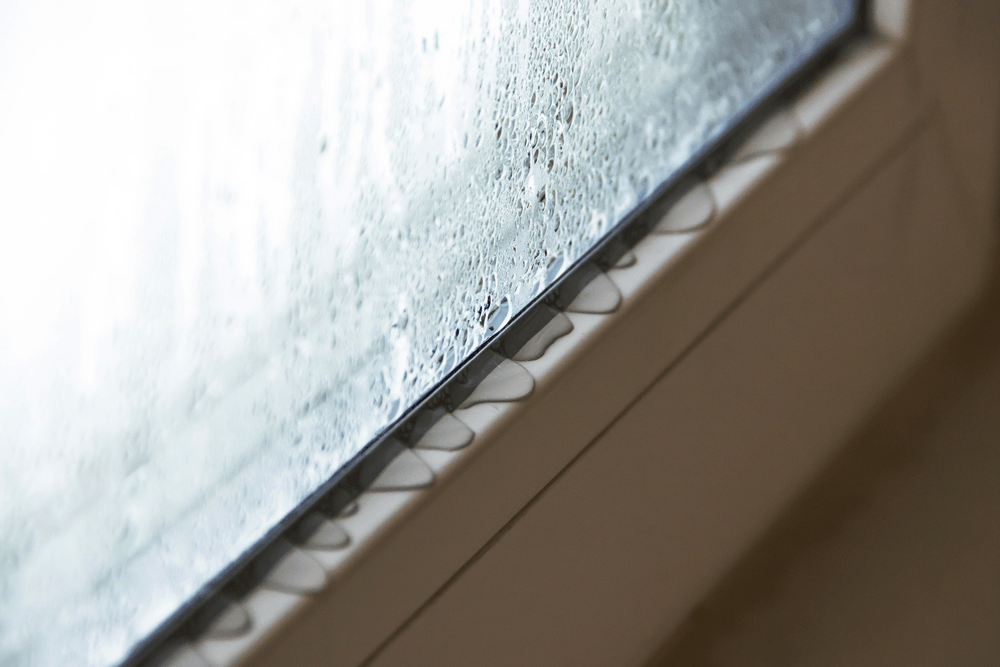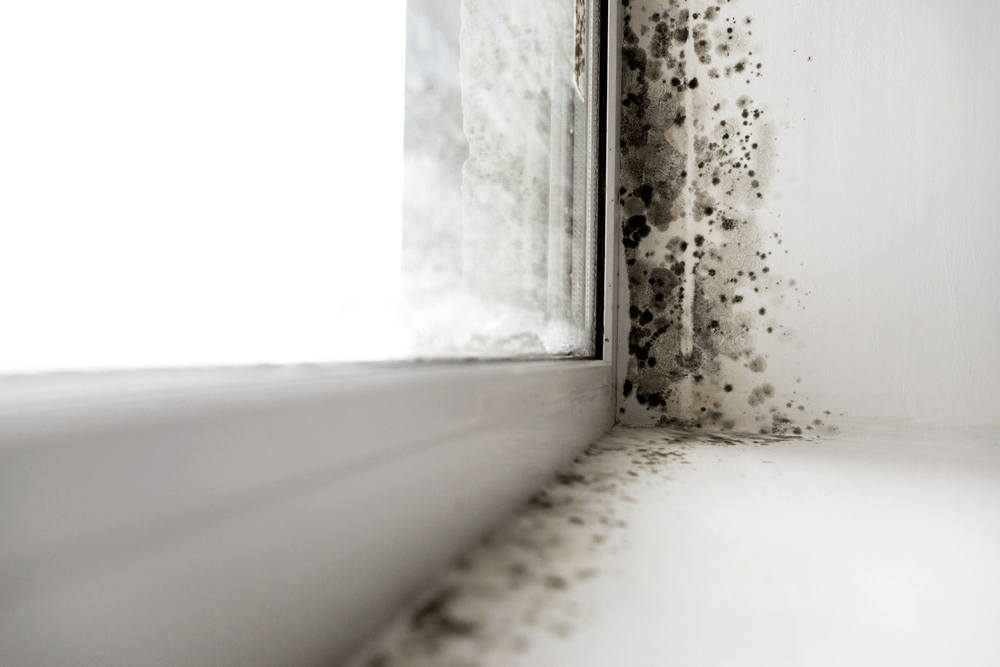With the winter months nearly upon us, it is likely that many of us will start to notice more condensation in our homes. Condensation can occur at any time but with the temperature dropping outside, we may find we are spending more time in our homes with the doors and windows closed. This can cause excessive moisture build up in your home as it has no way to escape. The excessive moisture can then lead to damp and mould in your home which is something you must try and prevent as it can cause damage to your home and health issues for those people living in your home.
Damp and mould caused by condensation
Condensation in the home is a common issue. If a home has high humidity levels or when warm air hits a cold surface, condensation will form. If the condensation isn’t removed it can lead to damp and mould growth.
In this article we will explore some of the things you can do to reduce condensation in your home. It is important to note, however, that damp and mould can be caused by a number of different reasons. If you have an underlying issue, such as leaking pipes or rising damp then it is important you seek advice from professionals.

Why is mould harmful?
Mould is a microscopic fungus which grows in damp and poorly ventilated areas. If mould spores are touched or inhaled they can be harmful to your health.
Mould can affect your immune system. It can cause respiratory problems, respiratory infections, allergies and asthma.
It is more dangerous for the very young, the elderly, those with underlying health conditions and weakened immune systems.
Further information from the NHS on how mould can affect your health can be found here.

Signs which may indicate you have a problem in your home
- A musty smell
- Peeling paint and wallpaper
- Dark, damp patches on the walls
- Walls, floors and ceilings that feel cold or wet
- Excessive condensation on windows
- Mould growth on walls, floors and ceilings
Tips on how to reduce condensation in your property
Ventilate, ventilate, ventilate
Our top tip is to ensure your home is well ventilated. Open a window or door during the day to allow moisture to escape.
Washing machines and tumble dryers
Always ensure washing machines and tumble dryers are installed correctly and are properly ventilated.
Drying clothes indoors
During winter months or in homes with no outdoor space, there is sometimes no choice but to dry clothes indoors. If you need to do this, ensure the room you dry the clothes in is well ventilated. So enables the moisture released into the air to escape from the room.
Bathroom extractor fan
Ensure your bathroom extractor fan is turned on when you bathe or shower. Keep the extractor fan on for at least 10 minutes after you have finished. Keep the door closed to prevent moisture from travelling through your home. If you do not have an extractor fan fitted, ensure a window is left open to help clear the air.
Kitchen extractor fan
Ensure your kitchen extractor fan is turned on when you are cooking and for at least 10 minutes after. It is also important to check it has been installed and vented correctly. If you do not have an extractor fan, open a window or a door to help clear the air.
Fish Tanks
Ensure your fish tank is covered with a lid to prevent it from creating unwanted moisture in your home.
Plants can contribute to excess moisture in your home
Whilst they have a lot of benefits, they can contribute to excessive moisture in your home. You may want to consider if too many plants in your home are adding to the issue.
Remove condensation
If you can see condensation has settled on walls and windows, ensure it is wiped away as quickly as possible.
Ensure wardrobes and cupboards are not overfilled
Trapped warm air with no ventilation can cause damp and mould growth.
Be mindful of where furniture is positioned
Do not push furniture up against walls as this prevents air from being able to move around it. Also, rooms crammed with contents can prevent air movement, causing damp air to become trapped. This is the reason why sometimes when furniture is moved, a build up of mould can be found behind it.
Continuous central heating
Instead of having your heating on a timer, it is more practical to have it on continuously. We would suggest using a lower temperature.
Install double glazing and loft and wall insulation
This will help prevent air from escaping and keep walls and other surfaces in your home at a higher temperature.
Speak to a professional
Are you concerned about condensation, damp or mould in your property? Do you feel that the tips above are not enough to help with the problem? We would suggest calling a professional to further investigate other causations. Flood Doctor provides comprehensive damp and moisture surveys and mould remediation services.
Flood Doctor has recently dealt with mould remediation in a London apartment. Details of this can be found in our recent case study. As well as remediating the mould, Flood Doctor also identified reasons why the apartment had excessive moisture.
If you have any concerns about excess moisture in your home call us today on 0800 285 1447








